I joined a “free” walking tour today: “The Story of Bucharest.” Can you find me in this picture? The “free” is in quotation marks because, of course, the guide expects a tip at the end, which is the payment for the tour, but I still like the concept.
The tour started at Piața Unirii (Union Plaza), where a large group gathered and met at the clock. The water fountains were all drained (winterized), and I’m sure that in the summer, it’s quite nice to watch the water plays. My photo shows the guts of it, which is also appropriate since I’m actually interested in how things work, too.
What I noticed first is how there are large advertisements, billboards, on top of every building surrounding the plaza. How very commercialized. The guide drew our attention to the Palace of Parliament (Palatul Parlamentului), the second largest administrative building in the world (after the Pentagon), a pure show of communist grandeur as instigated by the communist leader Ceaușescu. We heard how he demolished large parts of the city and displaced many people in order to build his vision of the monstrous building and the boulevard leading up to it from the Union Plaza, the longest such boulevard built, modeled after but longer than the Champs-Elisées in Paris.
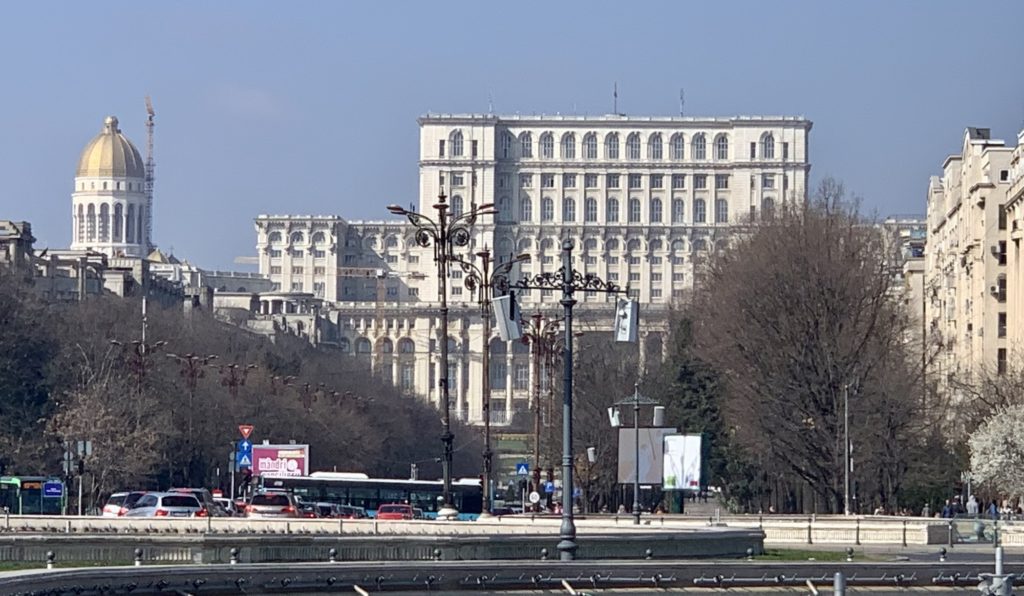
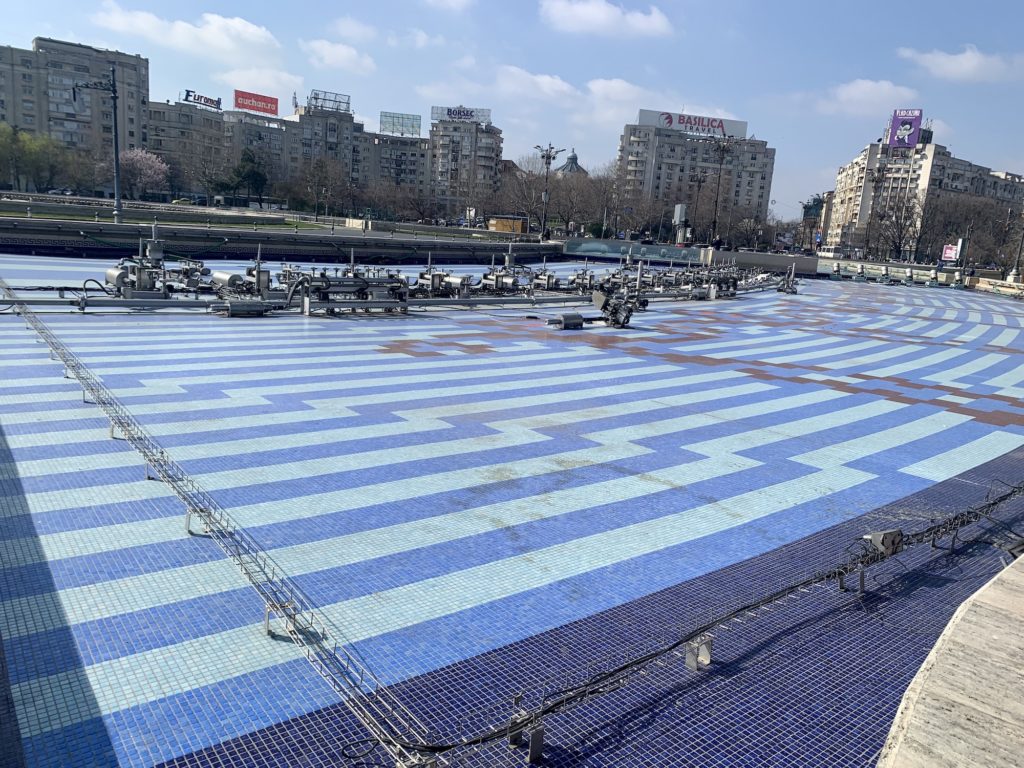
We moved on to see a little church crammed between and half-hidden by larger surrounding buildings, displaced with a sense of not belonging there. And we learned that several churches were moved on train tracks to avoid demolishing them in the execution of Ceaușescu’s vision. The Romanian engineer Eugeniu Iordăchescu came up with the idea to move them, and so the Romanians became the first people to move entire buildings. They even moved an entire apartment block with people still in it.
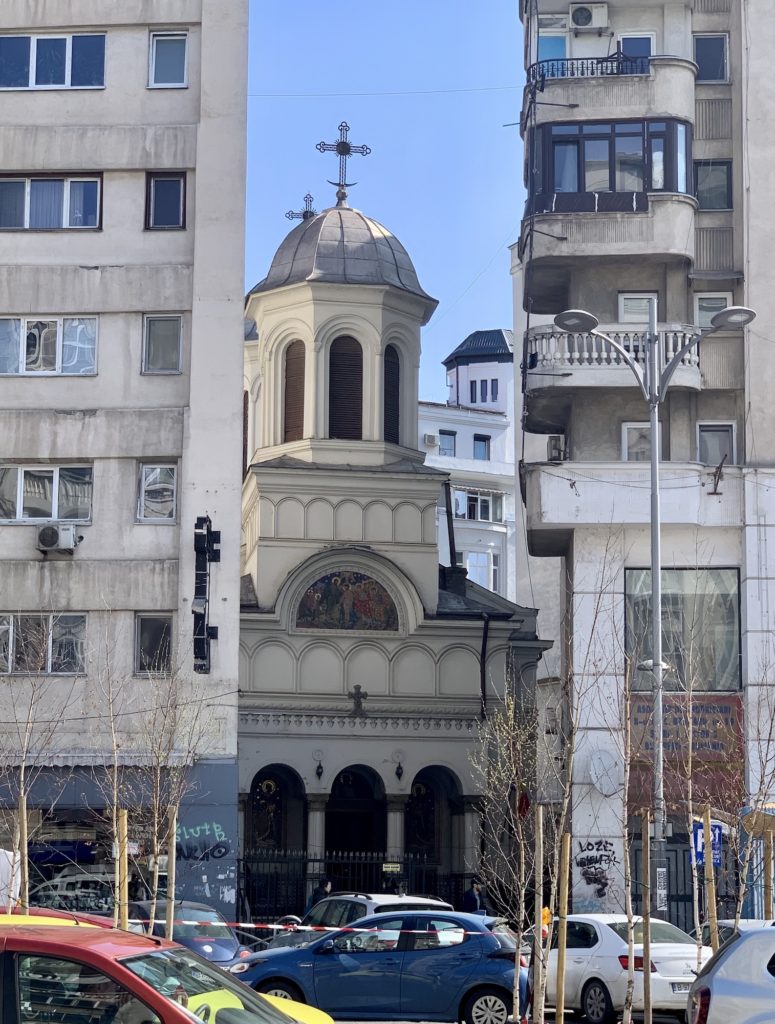
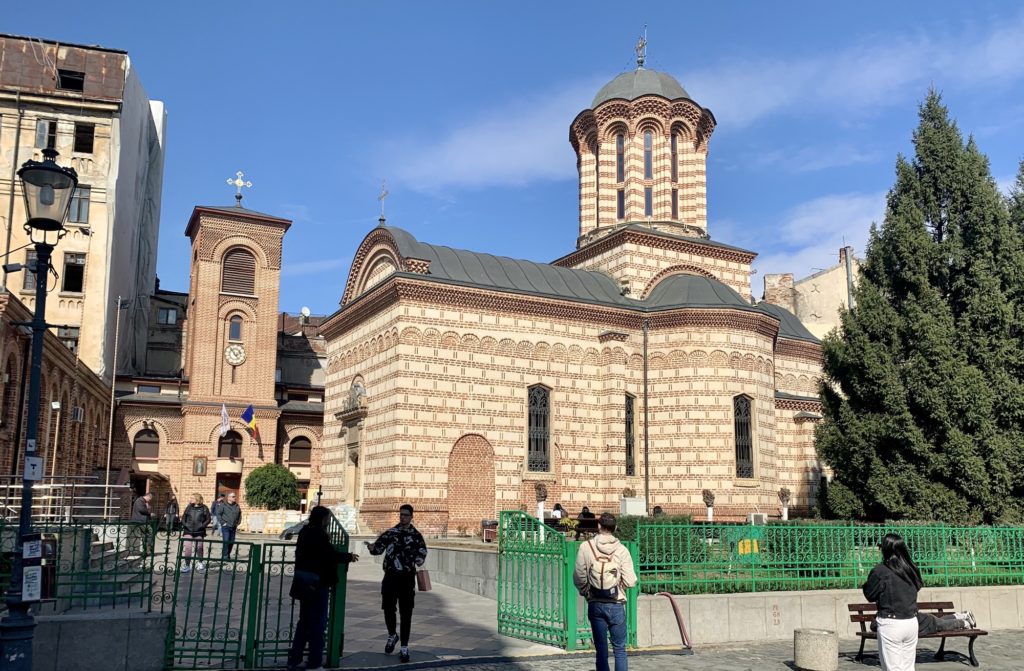
The next stop was Hanu Lui Manuc, an old restaurant and Inn, but not before we’d passed an orthodox mess with very beautiful live sacred choir music at the oldest church in town, Biserică Sfăntul Anton. I sat in the same courtyard of the church enjoying the sun on the day before. At Hanu Lui Manuc, we went into the courtyard and admired the architectural style while the guide told us about typical Romanian food staples, such as sarmale, mititei, Ciorba de fasole boabe cu ciolan afumat, and papanași (cabbage rolls, skinless pork sausages, bean soup with smoked pork, and cheese donut).
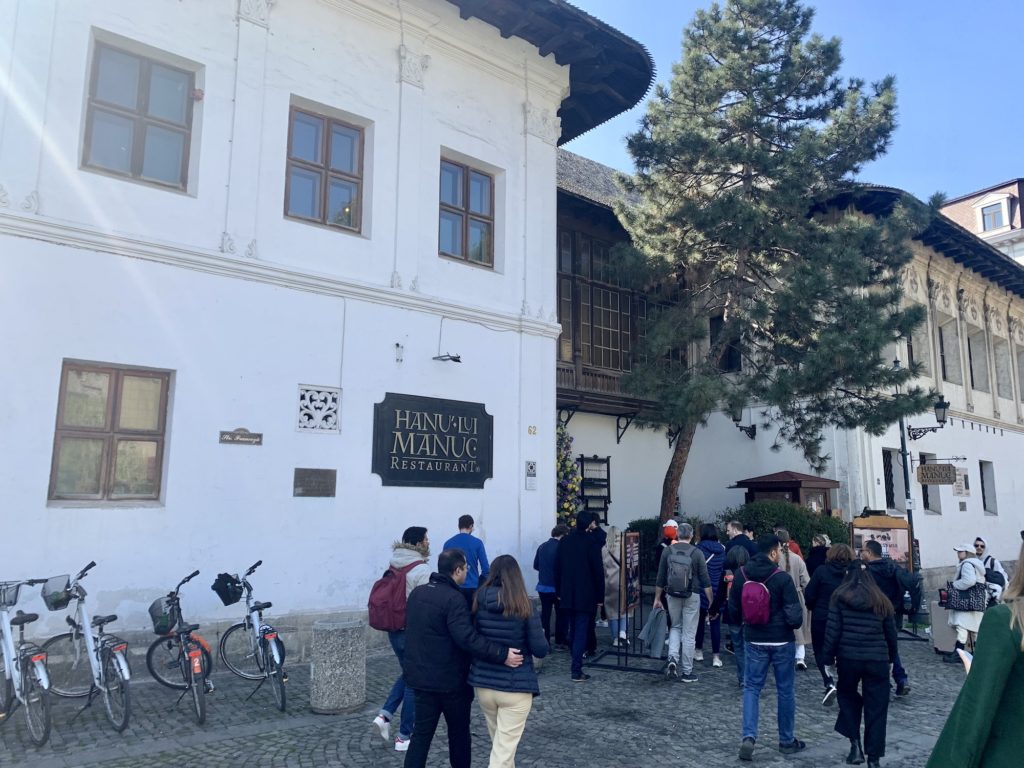
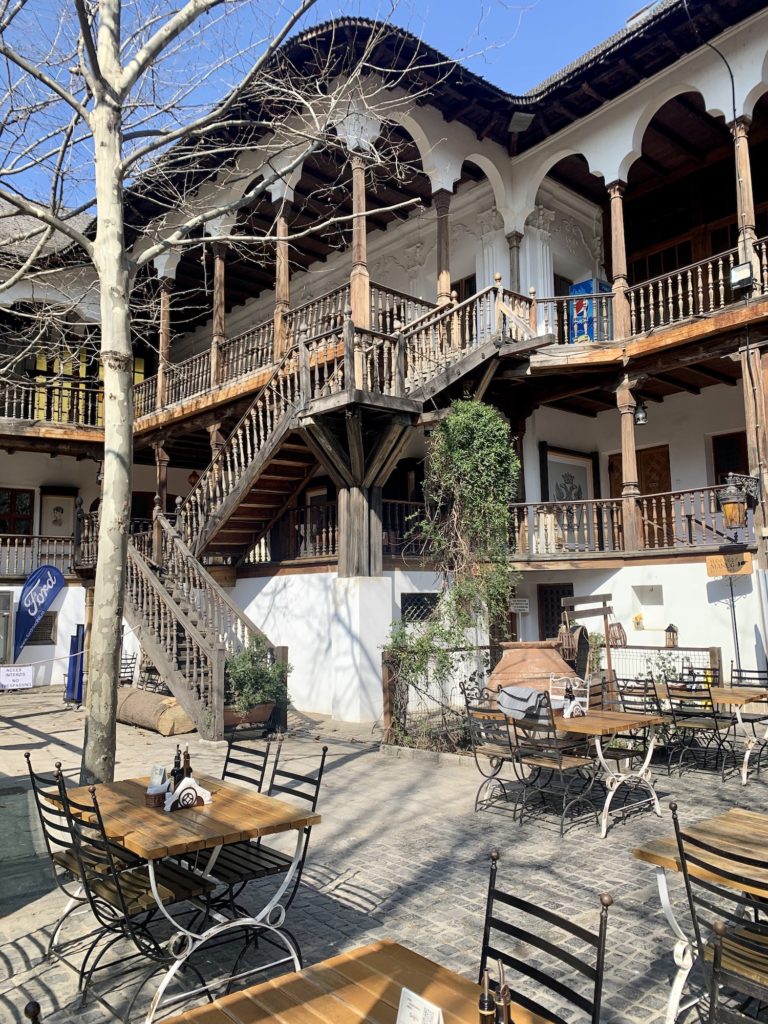
After stops at the Mănăstirea Stavropoleos and Caru’ cu Bere, both of which I’d already visited the day before, we walked through the only covered passageway in Bucharest, Pasajul Macca-Villacrosse, which is covered with a yellow glass roof and lined with restaurants, coffee shops and bars. At the Romanian National Bank, the guide spoke about the Romanian money, how they still aren’t able to get the Euro as a non-Schengen country, although they’ve applied long ago, due to not meeting all the criteria, and that the bills changed to plastic money which was a well-planned ploy to get Romanians to bring their cash to the banks.

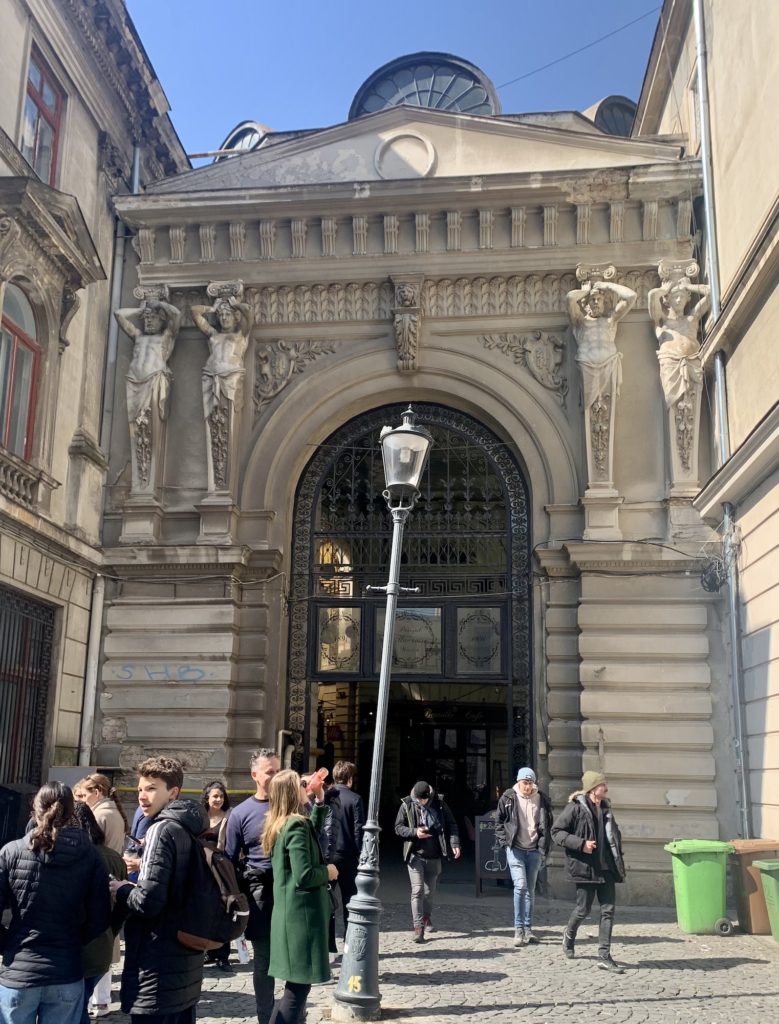
The last stop was at the Piața Universitații, where the guide spoke about the Romanian revolution, Ceaușescu’s final speech, protests and riots, the army was dispatched and then switched sides, people killed by the miners who were brought in to fight for the regime instead. After many people were killed, the communist regime was eventually brought down, and Ceaușescu and his wife were executed on Christmas Day in 1989 in a televised spectacle.
Communism under Ceaușescu had been not all that bad for the Romanians until 1981 when he announced austerity measures in order to pay off the country’s debt. The people of Romania, and especially in Bucharest, had to contend with rationed food, electricity and heating only four hours a day (morning and afternoon, 2 hours each), hot water only once a week—measures that were particularly harsh during the cold winters. Meanwhile, the Ceaușescu’s themselves were living in splendor. There is much to say about the communist period in Romania, and I can’t cover it all here, but knowing someone who has lived through it brought the stories another degree closer to me.
Overall I enjoyed the walking tour and consider doing another one.

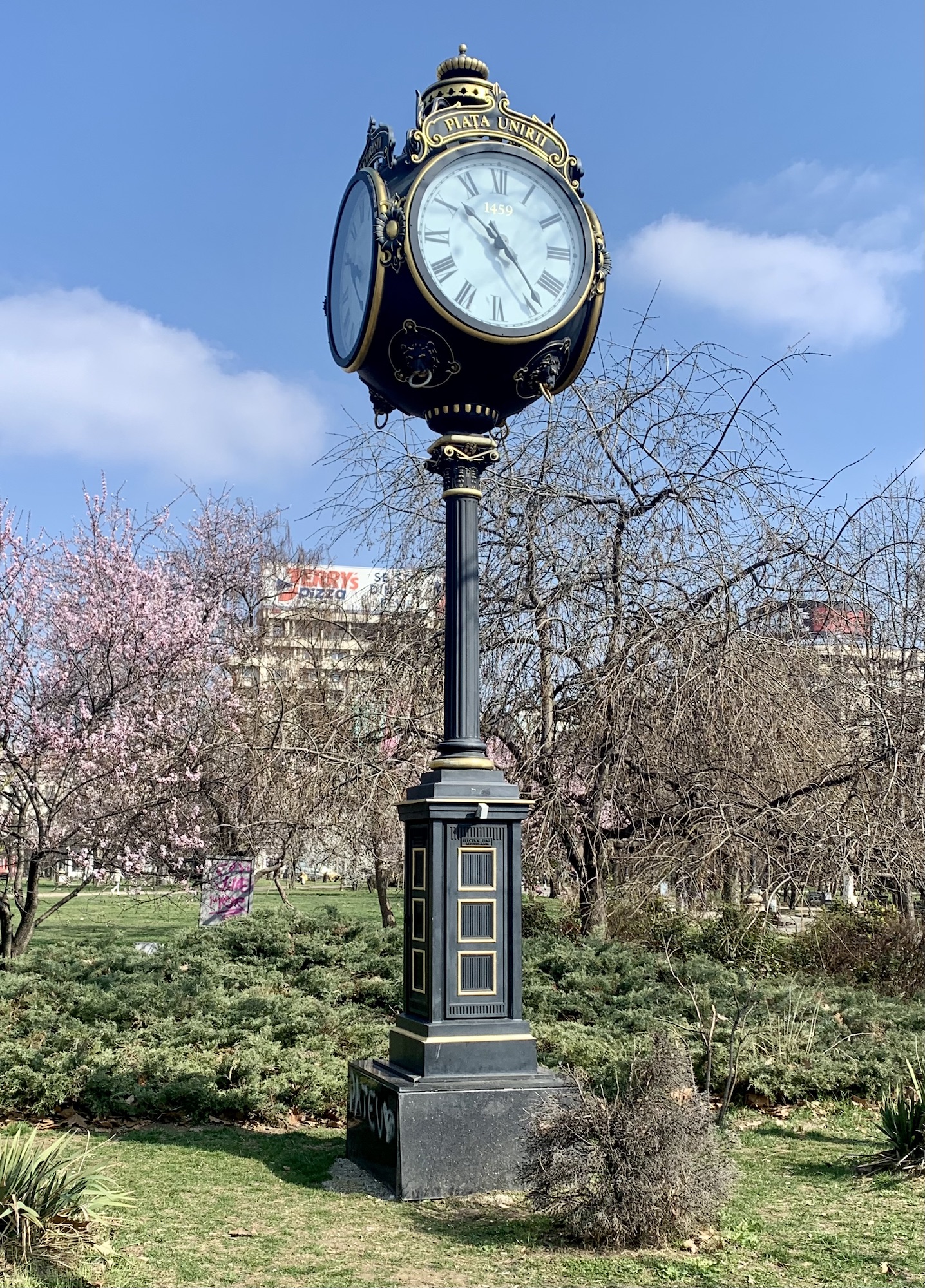
I found you! in the back, next to the person with the orange hat! Not to hard of a “where’s Waldo!! 🙂
Looks like a nice old European town! Enjoy you next “free tour”
C
Very cool ! Interested in some good pics of the interesting “donut” … I know how much you loved to take food pictures. Lol intrigued with Pasajul Macca-Villacrosse with the glass roof .